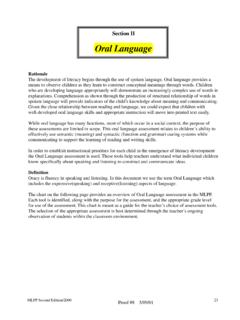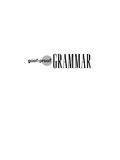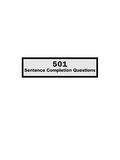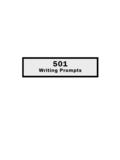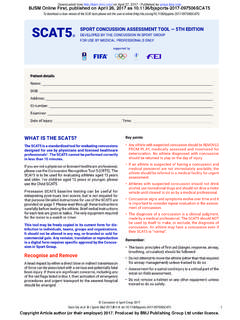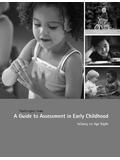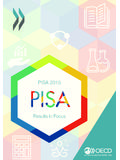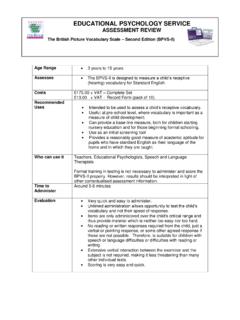Transcription of Oral Reading - Macomb Intermediate School District
1 MLPP second edition /2000123 Proof #8 5/09/01 Section VIIOral ReadingRationaleOral Reading provides a window for the listener to understand the integration of skills that the childuses to read. Children who read accurately, quickly, and in phrased units, often do better on assess-ments of Reading , their attitudes toward Reading are more positive, and they are more likely to readfor pleasure. Fluency plays an important role in becoming a good reader. We also know that theintegration of Reading skills appropriate to the text level and genre, foster Reading rates and accuracyrelated to way to assess fluency is to document in written form the child s oral Reading .
2 By listening to,documenting in written form, and observing a child read, teachers gather information about thereading behaviors and cueing systems (meaning, structure, and visual) used by the student. In orderto establish instructional priorities for each child in the early stages of literacy development, theteacher may use the oral Reading assessment. This assessment helps teachers understand whatindividual children know and use when Reading aloud. Teachers observations are crucial andcritical factors informing their decisions about whom and when to and creating a written record for a child Reading orally is a way of recording fluency, rate,accuracy, and the use of Reading strategies.
3 Fluency and rate are not the same but are related. Fluencyreflects the ability of the reader to read smoothly, which includes paying attention to punctuation,grouping words into meaningful chunks, and using intonations that reflect appropriate meaning oftext. Rate refers to the speed of oral and/or silent Reading as measured in words per minute. Readingstrategies include cues such as structure of language, meanings, and visual GuidelinesAssess each child individually. The assessment area should be quiet and free from major at a small table where you can sit beside the child and where the child can have the book placedon the table in front of her/him at a comfortable angle and distance.
4 Sometimes many classroomteachers take oral Reading records in the classroom during small group time and/or during dropeverything and read Comprehension Assessment has been adapted for MLPP from the work of Dr. Dorsey Hammond of Oakland University, Birdyshaw of CIERA, Dr. Scott Paris of University of Michigan, and Dr. Elizabeth Sulzby of University of second edition /2000124 Proof #8 5/09/01 Use classroom observations to determine if a child is ready to have an oral Reading record taken. Ifthe child demonstrates an understanding of words, sentences, and story knowledge as well as someword recognition skill, he/she may be ready to read a portion of text needed for an oral readingrecord.
5 The earliest oral Reading may be the Reading of pictures as labeling or a created story basedon the child s experience and the pictures. Periodically assess all children so that records of eachchild s growth in Reading can be maintained. Taking oral Reading records more frequently on childrenwho are not making expected progress will help you make informed decisions about what strategiesto emphasize during small group guided Reading records should be analyzed for student strengths and instructional needs, in order to providecriteria for planning future lessons and forming purposeful temporary groups for guided Reading lessons use the text level corresponding to the group s instructional level.
6 However,sometimes the group may include a range of student levels because the included students need alesson pertaining to a specific skill or teacher will select several books that may appeal to the interests of the student to beassessed. The books should also be at a readability level that matches the student s perfor-mance level. Generally, taking a running record at a child s instructional level will allow theteacher to obtain the most discriminating information for instruction. Additional oral readingrecords would be taken to establish the independent level of the with the child at a small table where you may hear and record the student s words quicklyand the student to choose a book that he/she would like to read from the teacher s book what book cues the student uses as he/she prepares to read the text.
7 , pictures onfront of the book and the the student to give a prediction regarding what might take place in the book, and recordthe to the student: I want to write down everything you do correctly as you read. So, I amgoing to be writing down a lot of your words. I will try to write quickly, but I want to beaccurate. Please read at a comfortable rate so we can both understand the turn to the 100 plus word passage that you have pre-selected for the student to readaloud. Generally, this passage should be at the beginning of the book, or the teacher needs to setthe context for what has occurred prior to the events being read about in the teacher will make a written record of the words the child is Reading , using the notationsystem that has been taught in second edition /2000125 Proof #8 5/09/01 oral RETELLING OF TEXT JUST this assessment by asking the student to retell the text portion that was just readorally.
8 Say to the student: Please tell me what you understand happened in the story thatyou just read to me. Pretend that I did not hear you read the text and that you want me toknow what the appropriate retelling rubric (narrative or informational) that is provided, the teacherwill record the level that the student s retelling is most like. It is possible that a student will beat different levels on the rubric for different text an emergent reader is unable to gain meaning from a story because of multiple errors,she/he may need to have an Intermediate assessment that allows a demonstration of thestudent s story comprehension after hearing the teacher read a story.
9 If the teacher be-lieves that further comprehension information may be needed, he/she may also use theoral/drawing retelling of a teacher read Student ProgressThe teacher will record the book name, book level, accuracy rate, self-correction rate, and rubricscores. See the oral Reading Fluency Rubric and oral Reading Retelling Rubric for the level that is the best fit for the child s Reading performance, and record that score on thestudent record under oral Reading . Teachers need to specify the student s instructional readinglevel (the student is able to read a selected passage with 90 percent to 94 percent accuracy) in orderto plan appropriate instruction using appropriate materials.
10 It is also helpful for teachers to record thestudent s independent Reading level (the student is able to read a selected passage with 95 percent to100 percent accuracy) for each student in the observation/comments section of the individual literacyprogress profile. This will help teachers provide students with appropriate books that can be analysis of an oral Reading record begins by identifying which cueing system the child uses mostoften. If the child is making substitutions in text that are based totally on one cueing system, thenadditional instructions to develop awareness and use of other cueing systems would be the next good reader will use visual, meaning, and structure cues flexibly and strategically when trying todetermine an unknown word during should be given to the accuracy and self-correction rates of the child as she/he a child makes multiple errors and shows little effort to self-correct.
